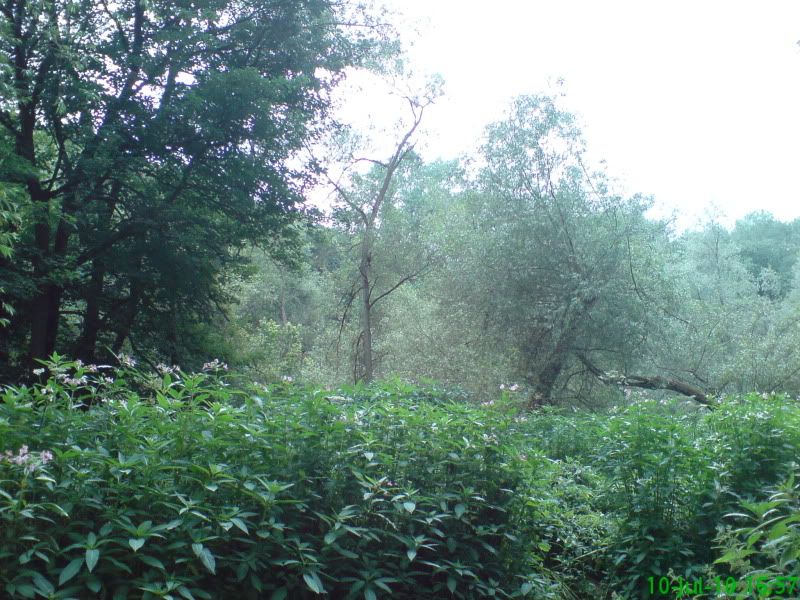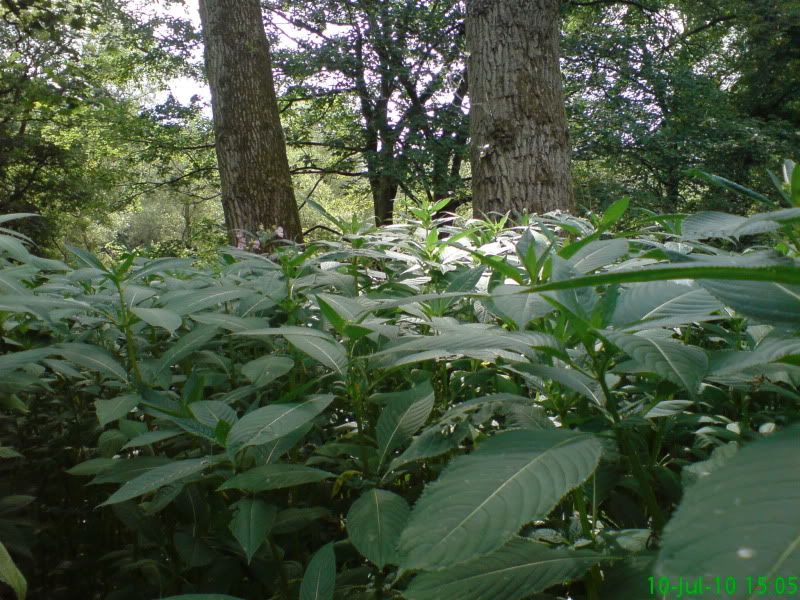Jonathan, I can understand your intrigue with the situation you've described. My instinct would be that it was either a territorial thing or someone who knows you playing a slightly malicious prank, or both! I'd be interested to know if you've seen any signs that someone else uses or camps at the same spot.
Jimford earlier mentioned Ben Macdhui, well known for the story of a British army officer in the 20's who went onto the mountain armed with an army revolver and took two shots at a huge grey man who was following him... I'd be more concerned about the state of mind of the army officer so closely following WWI. The problems arise when you discover that the eminent Scottish mountaineer, Professor Norman Collie reported being followed by a similar phenomenon in 1889. Collie was not a man you'd describe a fanciful, but rather a dour, hard man and respected academic and mountaineer.
The summit of Macdhui is not a place I'd want to camp. It's desolate and there's nothing to burn, whereas there are two bothies within easy enough striking distance and welcoming pine woods less than an hour away. I will say that there is an almost tangible atmosphere on Macdhui at times, and not a welcoming one. I have encountered a number of places, where I've had the feeling that no-one invited me there, as though I was intruding. I do believe that there are certain places which carry some sort of memory, sometimes almost menacing but sometimes comforting.
As examples, looking for a camping spot at the western end of Glen Lyon late one June evening and coming across a small "house" with an array of dumb-bell shaped stones of diminishing sizes arranged at the door. The hackles stood up on my neck and I promptly departed. I found a suitable place beside a burn a few miles away and camped there for the night. In the morning I noticed a cairn a few hundred yards away and remember checking it out. It wasn't until after I got home that I found out the cairn was in memory of a young C15th. woman who had been killed when trying to prevent slaughter between the locals and cattle raiders.
I spent the night fishing for sea trout at a sweeping bend on the River Ettrick once. I the morning I took a couple of fish to the owner of the house I’d rented for the week. He asked me where I’d been fishing and told me the locals didn’t fish there at night, as Jamie the 6th ordered 300 Borderers to be drowned there.
This is Scotland and there is nowhere bad things haven’t happened! And the Scots never needed the English when it came to butchery. We were always more than capable between ourselves!
As for the little "house", I've been there since and am reluctant to say how old I think it might be. The stewardship was taken over by the head keeper of the estate after the previous steward died at a ripe old age. The stones (in fact, waisted glacial/alluvial stones representing the old woman, her husband and their children) are taken out at Beltane (end March) and returned to the house at Sabhain (end October). There were originally 11 or 12 of them I think, but some of the stones have been stolen recently. It might be Neolithic! This is in Gleann Cailliche (Glen of the Old Woman), the "house is known as Tigh na Cailliche/Bodach, and there is an ancient rhyme about the place. Check out Grid Ref; NN 3804 4271
In contrast, I visited a hill behind my ex-wife’s parents farm after reading that an iron age settlement had been discovered there by the Cambridge Aerial Survey in the 1970’s. I asked her 80 year old Grandfather, who after being puzzled for a minute said, “Oh, the auld steading? I used to play up there when I was a bairn! I always fancied the folk up there came down and built the farm in safer times!” So much for academia!
What I discovered was a circular outer wall, 60 metres dia, door facing S E, and 3 hut circles inside, door also S E facing, the whole hill being defended by dyke and ditch systems. When walking out of the main gate, a path was visible going straight downhill to a dyke and ditch cut straight across the hill. There were 5 stepping stones across the ditch. My lasting memory is of the sensation that this was a happy place. You could easily imagine the voices of children playing!
I have left a remote highland bothy in the small hours to go out into the rain to put up a tent because of the clattering and banging that was going on. I couldn’t only hear these noises but could feel the vibrations through the floorboards. Doors banging, drumming on the walls and the sound of hob-nailed boots in the room I was in. After erecting my tent, I went back for my sleeping bag and brewing kit but felt real fear only when I put my hand onto the doorknob and decided I’d pushed it far enough. Fortunately, I had my hill jacket and lay in the tent trying to keep warm for the rest of the night. That was almost 30 years ago and I still have no rational explanation.
A friend of mine, a typically dour Scottish hill-man and not one to frighten easily, told me of a night in a tent where he woke up hearing loud breathing, he described it as being like a cow breathing. He got out of the tent and looked around a couple of times but saw nothing, although when he returned to the tent continued hearing this heavy breathing which persisted all night. He couldn’t remember whether the sound continued when he was outside the tent, but did say he lay clutching his knife but didn’t sleep a wink.
Another mate tells a story of sitting in a highland bothy alone one night when he was terrified by the sudden appearance of a white face at the window. He sat watching the window, as you do, until the face eventually appeared again. It turned out to be a white garron, a horse used by the keepers to bring stags back down off the hill. These things are sent to test us!
I put the tent up once beside a highland lochan and got off onto the hill. Looking down an hour later I could see a big, black, fish-like shape which I slowly became aware was moving slowly around the lochan. I watched it for a while, then moved off puzzling as to what it might be. Returning some hours later though and looking down onto the loch I decided that superstition and cowardice was the healthy option and decided to shift venues. I returned a few days later, determine to find out what the giant fish shape was... tadpoles! A million of them!
After being told of an approaching Atlantic storm, I retreated to Sourlies bothy at the head of Loch Nevis in the belief that it would be sheltered from the worst of the weather. Wrong again!
That night, I thought the roof was sure to come off. The wind sounded like a train passing. The door kept blowing open and I eventually went outside and found a boulder big enough to stand behind the door. At some point in the night I heard the door scraping and banging again and got out of bed to push the boulder back into place. I closed the door with one hand to see a dark looming figure behind the door.
OH SHA HOOR! I screamed at the ghost.
AH YA BESTIRT! The bothy ghost yelled back.
“Jesus, I thought you were a bothy ghost.”, said I.
“Does a bothy ghost smell like it’s sh!t itself, like?”, replied the bothy ghost.
If our pleasure is to go into remote, wild places, often with a long history of human occupation, we must go with an open mind, prepared and thankful for whatever surprises are in store for us.
I’m not saying there was any bad feeling at Tigh na Cailliche. It was just a case of walking into the unexpected combined with a latent sense which I believe we all carry. We are human beings, and we somehow know when we have stepped into a place revered by our ancestors!
Worth bearing mind are the words of an Inverness journalist who, around 1840, reported asking men in Knoydart how long their people had lived there. He said that they discussed this and returned a number of times to ask him to repeat the question. His belief was that they didn't understand the question, and the only answer he got was that they were the Sons of the Fianna!
However, I still say that the scariest thing out there, at least in the UK, is Modern Man and as any anthropologist will tell you, he's a wimp!






